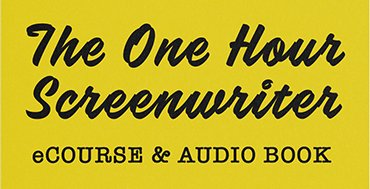How to Use Byron Katie’s Four Questions
Yesterday I posted Byron Katie’s four questions. These questions get at the fear and fearful thinking that causes personal suffering. As many of you know the best definition of fear I have ever heard is: “Fear is the anticipation of grief.” Anticipating something often makes it true– That’s where the saying “a self-fulfilling prophecy” comes from. Here is how to use the questions in fictional character development:
1. Is it true? Every character has a specific view of the world, of themselves and of their role in the role. This is based on the person’s Character Type. These beliefs and or philosophies limit the character in some profound way. For example, a Power of Truth character believes that the world is fundamentally uncertain. These characters believe life is filled with hidden pitfalls, secret agendas and you can’t really trust in or believe anything.
When operating out of fear these character doubt everyone and everything. They don’t even trust themselves– second-guessing every decision, doubting themselves and others. Mickey Sachs (Woody Allen) in Hannah and Her Sisters at his most anxious neurotic state is a great comic example of the Power of Truth Character Type. Mickey says:
“…I really hit bottom. You know, I just felt that in a Godless universe, I didn’t want to go on living. Now I happen to own this rifle which I loaded, believe it or not, and pressed to my forehead.”“And I remember thinking… I’m gonna kill myself. Then I thought… What if I’m wrong? What if there is a God? I mean after all, nobody really knows. But then I thought, no. You know, maybe is not good enough. I want certainty or nothing.”
“…I really hit bottom. You know, I just felt that in a Godless universe, I didn’t want to go on living. Now I happen to own this rifle which I loaded, believe it or not, and pressed to my forehead.”
“And I remember thinking… I’m gonna kill myself. Then I thought… What if I’m wrong? What if there is a God? I mean after all, nobody really knows. But then I thought, no. You know, maybe is not good enough. I want certainty or nothing.”
Mickey nearly shoots himself but the gun slides off his forehead and he escapes in the resulting mayhem. He run into the street, walks for hours and then retreats into a movie theater where a Marx Brother’s movie is playing.
“…I went upstairs to the balcony, and I sat down and, you know, the movie was a film that I’d seen many times in my life since I was a kid, and I always loved it. And, you know, I’m watching these people up on the screen, and I started getting hooked on the film, you know?”.“…And I started to think how can you even think of killing yourself? I mean, isn’t it so stupid? Look at all the people up there on the screen. You know, they’re real funny, and, and what if the worst is true?”.“…What if there’s no God, and you only go around once and that’s it? Well, you know, don’t you want to be part of the experience? You know, what the hell, it’s not all a drag.”
I’m thinking to myself, geez, I should stop ruining my life… searching for answers I’m never gonna get, and just enjoy it while it lasts. And… I mean, you know, maybe there is something. Nobody really knows. I know, I know maybe is a very slim reed to hang your whole life on, but that’s the best we have. And… then, I started to sit back, and I actually began to enjoy myself.”



Create a visual map for a character’s emotional journey. Pull stories from character rather from rote story structure beats. Some of the largest international media companies, use this in story and character development.


A clear concise guide for writers and producers to have by their side as they embark on a project. It gives a really vital reminder of what is key for story success.


No comment yet, add your voice below!